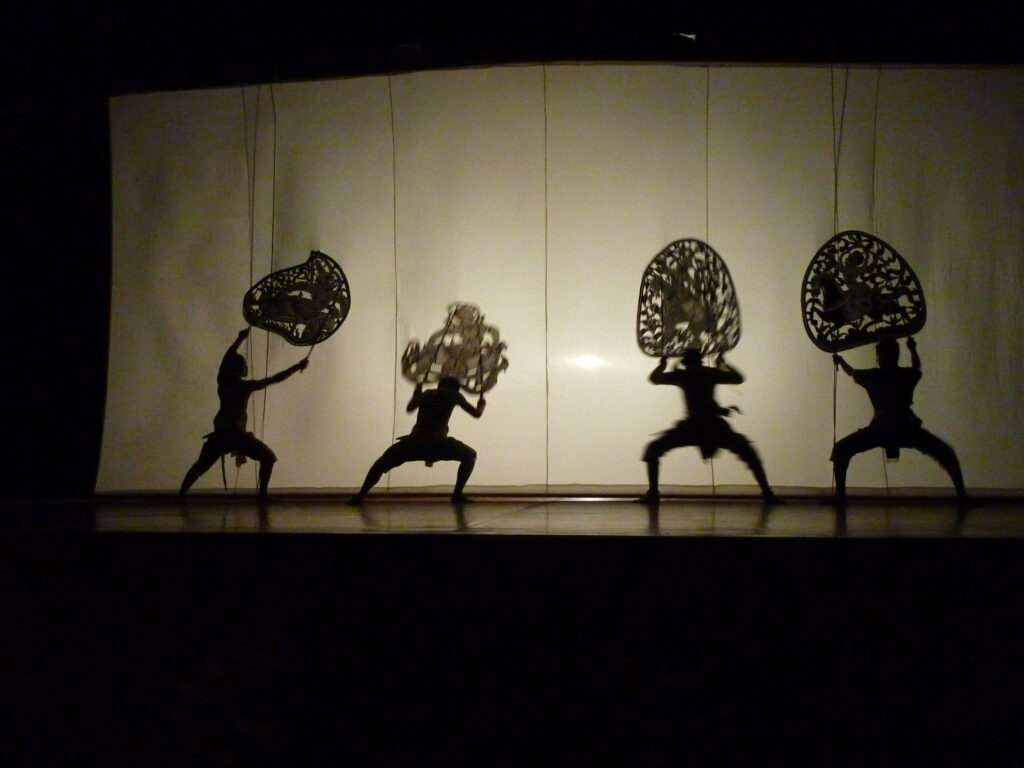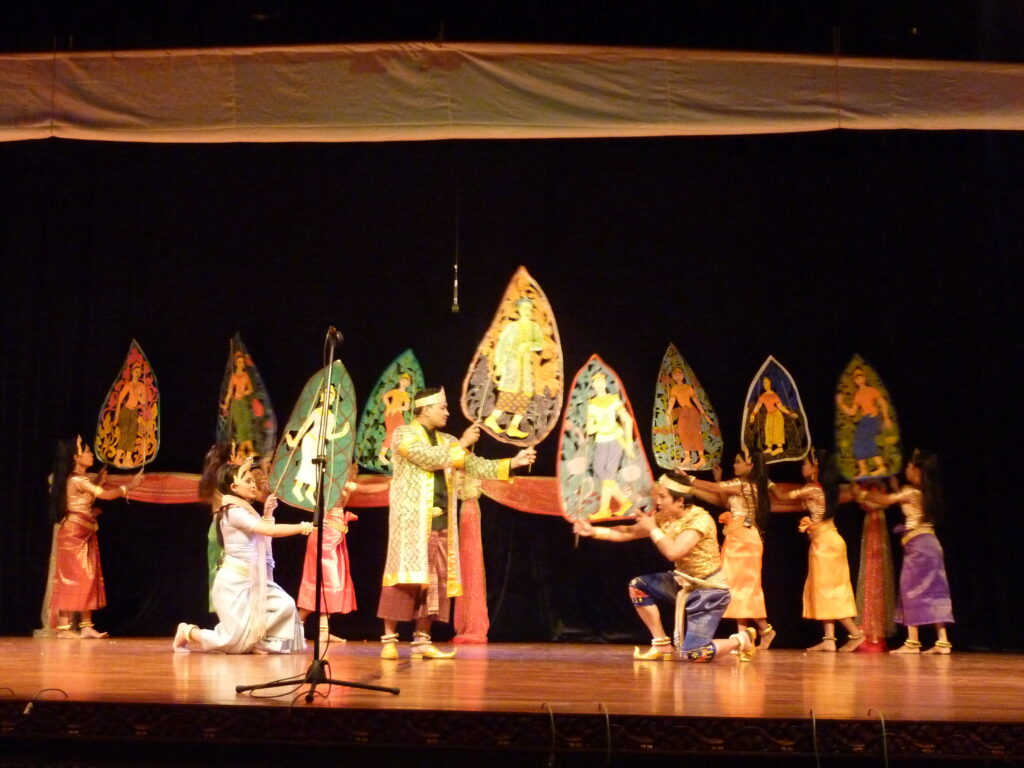ការផ្លាស់ប្តូរ និងបត់បែនមិនទាន់ស្ថានភាពនិងសភាពការ គឺមិនខុសអ្វីពីក្រុមហ៊ុន ទូរស័ព្ទណូគា ដែលបាត់សាបសូន្យមិនមាននៅលើទីផ្សារសព្វថ្ងៃនេះ ក៏ព្រោះតែមិនបានផ្លាស់ប្តូរតាមសភាពការចរន្តរ៍ដូច្នោះដែរ។ ដូចគ្នានេះ ទម្រង់សិល្បៈបុរាណនិងប្រពៃណីខ្មែរមួយចំនួនធំ មិនបានធ្វើបច្ចុប្បន្នភាវូបនីយកម្មនិងមានបច្ចុប្បន្នភាពទាន់ពេលវេលានិងកាលៈទេសៈ ពោលគឺធ្វើនិងរក្សានូវភាពដដែលៗ។
ទស្សនៈ ខ្លីខ្លឹម ប្លែកទំនើបរំភើបទាក់ទាញ អស្ចារ្យ ផ្ទុះ និងសកលភាវូបនីយកម្ម តំបន់ភាវូបនីយកម្ម និងសមាហរណកម្មអាស៊ាន ជាបរិបទថ្មីដែលសិល្បៈខ្មែរត្រូវឆ្លុះបញ្ចាំង។ សិល្បករសិល្បការិនី ត្រូវ «គិតជាសកល ធ្វើជាខ្មែរ» ក្នុងទស្សនៈ «បុរាណមិនយឺត សម័យមិនបរទេស» ដើម្បីរក្សាអត្តសញ្ញាណខ្មែរ។

ជាមួយគ្នានេះ សិល្បៈបុរាណនិងប្រពៃណីខ្មែរ ក៏កំពុងប្រឈមនឹងប្រព័ន្ធបណ្តាញសង្គមឌីហ្ជីថឹលសម័យជឿនលឿននិងសម្បូណ៌បែបនាពេលបច្ចុប្បន្ន ជាពិសេសតាមរយៈទូរសព្ទបញ្ញាដែលគ្រប់គ្នាមាននៅនឹងដៃ។
ពាក់ព័ន្ធនឹងការផ្សព្វផ្សាយនិងអប់រំប្រជាពលរដ្ឋ យើងនៅខ្វះកម្មវិធីផ្សព្វផ្សាយអប់រំពីសិល្បៈបុរាណនិងប្រពៃណីខ្មែរ ដើម្បីបញ្ជ្រាបនៅក្នុងសាធារណជន ជាពិសេសស្រទាប់យុវវ័យ។ ជាលទ្ធផល សិល្បៈបុរាណនិងប្រពៃណីខ្មែរ ខ្វះការគាំទ្រពីសាធារណជននិងយុវវ័យ។

លើសពីនេះទៅទៀត យើងគួរពិនិត្យឡើងវិញនូវទស្សនៈ «អភិរក្ស ថែរក្សា ទំនើបកម្ម ច្នៃប្រឌិត បង្កើតថ្មី នវានុវត្តន៍ និងអភិវឌ្ឍន៍» ថាតើយើងត្រូវធ្វើយ៉ាងដូចម្តេចនាអនាគតកាល? យើងស្គាល់ខ្លួនឯងនិងវប្បធម៌របស់ខ្លួនឯងច្បាស់ហើយឬនៅ? យើងបានកំណត់ទិសដៅច្បាស់ហើយឬនៅ? យើងនៅឯណា កំពុងធ្វើអី ទៅណា? គំនិតនិងទង្វើមួយទៀត ក៏យើងគួរពិចារណាដែរ គឺគំនិត «សិល្បៈដើម្បីសិល្បៈ» និង «សិល្បៈដើម្បីលុយ» (Art for art sake versus Art for money sake)។ ជាមួយគ្នានេះ យើងក៏ត្រូវទទួលស្គាល់ការពិត គឺថា «ឆន្ទៈមិនអាចរំលងឬឈ្នះលទ្ធភាព» បានឡើយ។
នៅក្នុងសៀវភៅ ទស្សនីយភាពខ្មែរ (២០០៣) លោក ពេជ្រ ទុំក្រវ៉ិល បានកត់ត្រាសិល្បៈទស្សនីយភាពជាង២០ទម្រង់រួមមាន៖ ១) របាំក្បាច់បុរាណ ២) របាំប្រពៃណី ៣) របាំប្រជាប្រិយ ៤) សៀក ៥) ស្បែកធំ ៦) ស្បែកពណ៌ ៧) ស្បែកតូច ៨) ល្ខោនតុក្កតា ៩) ល្ខោនខោល ១០) ល្ខោនយីកេ ១១) ល្ខោនបាសាក់ ១២) ល្ខោនមហោរី ១៣) ល្ខោនកំណាព្យ ១៤) ល្ខោនពោលស្រី ១៥) ល្ខោនគែន ១៦) ល្ខោនបើកបទ ១៧) ល្ខោនបាមោជ្ជទ័យ ១៨) អាយ៉ៃ ១៩) ល្ខោនអាប៉េ ២០) ល្ខោនភ្លេងការ ២១) ល្ខោននិយាយ ២២) ល្ខោនចម្រុះ ២៣) ការនិទានរឿង ២៤) ចម្រៀងចាប៉ី ២៥) តន្ត្រីខ្មែរ ២៦) តន្ត្រីខ្មែរលើ ២៧) សិល្បៈអន្តរជាតិនៅកម្ពុជា (របាំបាល្លេ តន្ត្រីសម័យ តន្ត្រីសំឡេងស្រាល និងចម្រៀងជាពួក)។ យើងគួរកត់សម្គាល់ថា កម្ពុជាយើងក៏មានសិល្បៈល្ខោនត្រាប់ផងដែរ។

ហេតុអ្វីបានជាទម្រង់ខ្លះក្នុងចំណោមទម្រង់ទាំងជាង២០ខាងលើនេះបានស្លាប់ ដូចជាល្ខោនកំណាព្យ ល្ខោនពោលស្រី ល្ខោនបាមោជ្ជទ័យ និងល្ខោនអាប៉េ ជាដើម? ហេតុអ្វីបានជារបាំក្បាច់បុរាណខ្មែរ មានភាពលូតលាស់រុងរឿង និងរស់រៀនមានជីវិត កេរ្តិ៍ឈ្មោះល្បីរន្ទឺសុះសាយ? ទាំងអស់នេះ គឺដោយសារការអប់រំ ផ្សព្វផ្សាយ បណ្តុះបណ្តាល យល់ដឹង ស្រឡាញ់គោរព ថែរក្សាលើកស្ទួយ អភិវឌ្ឍ និងបន្តវេនដោយទស្សនិកជននិងយុវជនយុវនារីខ្មែរយើង៕
——————————-,
CHALLENGE OF KHMER TRADITIONAL ART MOVING FORWARD
The inability to timely adapt and change to situations and trends is no different from what happened to Nokia which is no longer on the market today. Likewise, a number of traditional Khmer performing arts have not timely changed and adapted to the current situation.
The concepts of short but exquisite, different, modern, exciting and attractive, marvelous and exploding as well as globalization, regionalization, and ASEAN integration are all new contexts in which the traditional Khmer performing arts must reflect. Khmer artists must think globally but act locally or bear in mind the notion of traditional but not backward while modern is not foreign in order to maintain the Khmer identity.
With this, the traditional Khmer performing arts also face challenges of social digital media readily and conveniently available on our smart phone in our pockets.
There has been lacked education and public programming on the traditional Khmer performing arts for the public, particularly, the youth who will be the future cultural carriers. As the result, there is a lack of public support for such a tradition in question. Besides, we also ought to examine the concept of conservation, preservation, modernization, innovation, new creation, and development of the traditional Khmer arts. What will we do moving forward? Do we clearly know ourselves and our culture? Where are we; what are we doing; and where will we go? We also need to reexamine our work and endeavor on the idea of “art for art’s sake and art for money’s sake.” However, we must realize and accept that principle and willingness cannot supersede the means and capacity.
In his book Khmer Performing Arts (2003), Mr. Pich Tum Kravel documented more than 20 Khmer performing arts, including 1) Khmer court dance, 2) folk dance, 3) popular dance, 4) circus, 5) large-sized puppetry, 6) colored puppetry, 7) small-sized puppetry, 8) marionette, 9) masked play, 10) yike theater, 11) basakk theater, 12) mohori theater, 13) poetry theater, 14) female narrative theater, 15) ken theater, 16) opening song theater, 17) bamochtey theater, 18) ayai, 19) ape theater, 20) wedding music theater, 21) spoken theater, 22) combined theater, 23) story-telling, 24) epic singing, 25) Khmer music, 26) indigenous ethnic music, 27) international arts in Cambodia (occidental ballet, modern music, chamber music, and chorus). I should also add to the list the mime and pantomime.
Why have some among the more than 20 forms of Khmer performing arts died out, namely, the poetry theater, female narrative theater, bamochtey theater, ape theater, and so on? On the contrary, why has the Khmer court dance been prosperous and reputed? All this may be attributed by education and public programming of the traditional Khmer arts and culture for the public to understand, appreciate, love, respect, preserve and promote, develop, and continue to carry on this priceless cultural heritage, particularly by the future Khmer generations.
អត្ថបទដោយ៖ បណ្ឌិត សំ សំអាង






